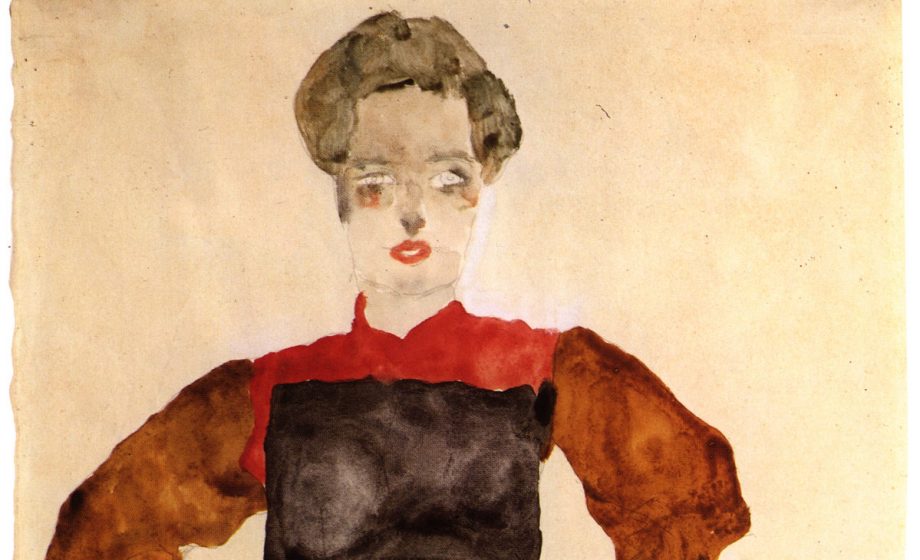
Egon Schiele, ‘Frau mit schwarzer Schürze (Woman in black Pinafore)’, 1911. Courtesy Collection Grünbaum.
After tediously fighting for two artworks by Egon Schiele, the heirs of Franz Friedrich ‘Fritz’ Grünbaum (1880-1941), a famous cabaret singer from Austria and a vocal critic of the Nazi party, are one step closer to possibly bringing the artworks home. On July 16th, a panel of five judges in a New York Appellate court unanimously upheld a 2018 ruling that favoured Grünbaum’s heirs, Timothy Reif and David Frankel, on the return of Woman in a Black Pinafore (1911) and Woman Hiding her Face (1912).
The works are part of a pivotal legal case in the US that began last year and captivated the art world. Bought by Richard Nagy, a London-based art dealer in 2013, the pair of works by Schiele made headlines when then New York State Supreme Court Justice Charles E. Ramos ruled that the artworks should be returned to Grünbaum’s heirs. The ruling was one of the first high-profile cases to utilize the Holocaust Expropriated Art Recovery (HEAR) act, created by congress in 2016, which creates a more relaxed statute of limitations concerning artworks stolen or sold under duress during World War II.
In a phone interview, Ramos told Art Critique that ‘one is always optimistic’ when their ruling is appealed. In this case, Ramos said he was most impressed by the amount of leg work the panel of judges did to come to their 46-page long decision. ‘I’m proud of what they did,’ continued Ramos, ‘They’re a great bench but this was outstanding work.’ Even with the extensive ruling of the panel, this might not be the end of the road for Grünbaum’s heirs if Nagy decides to appeal the decision, again, knocking the case one step closer to the US Supreme Court.
